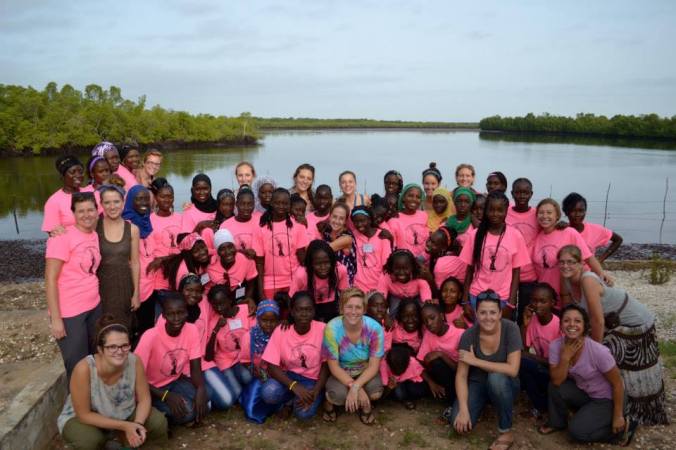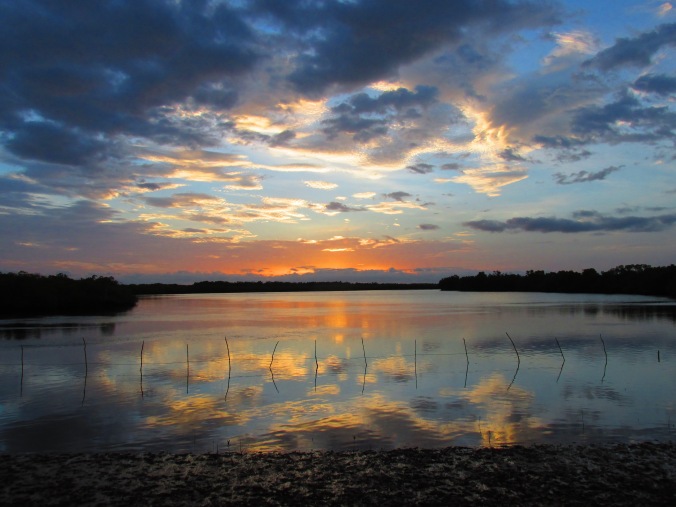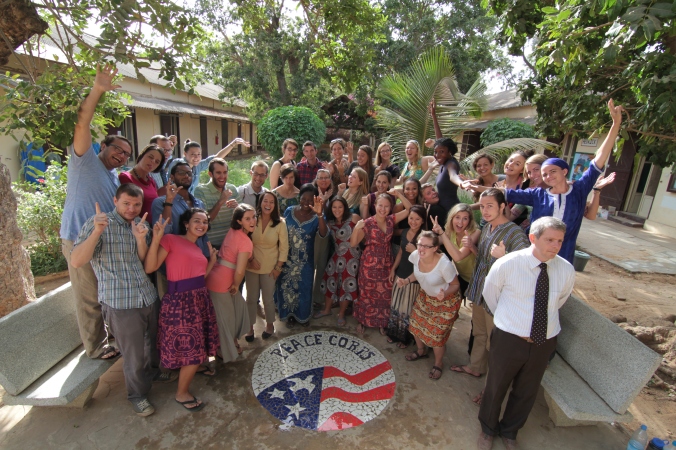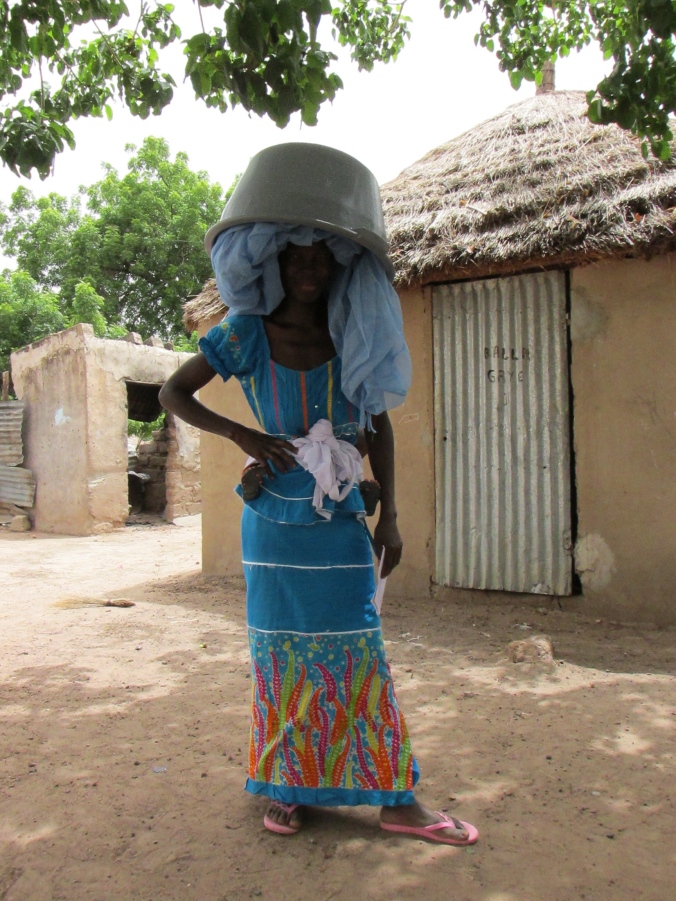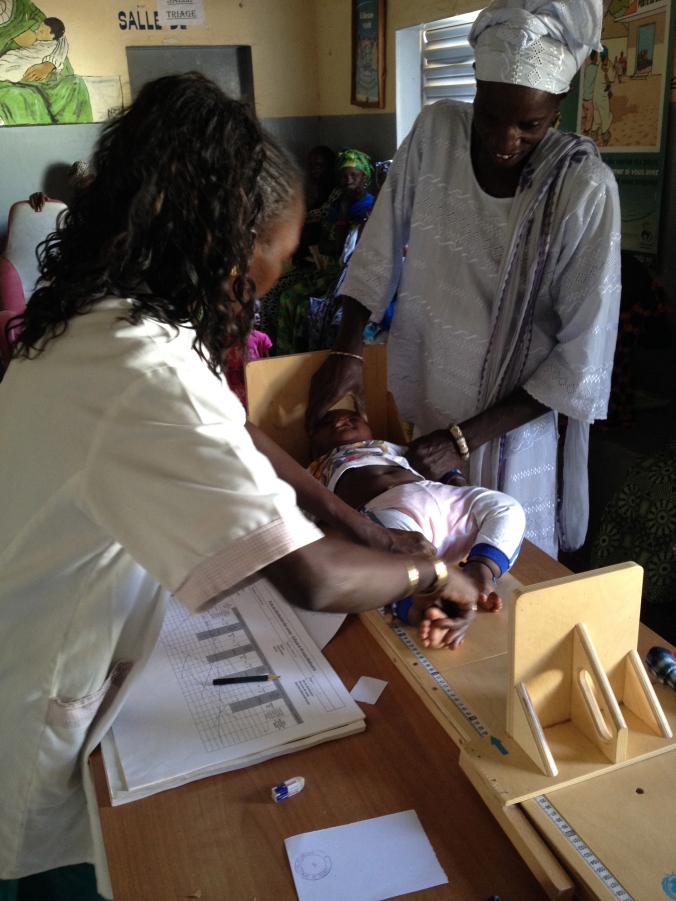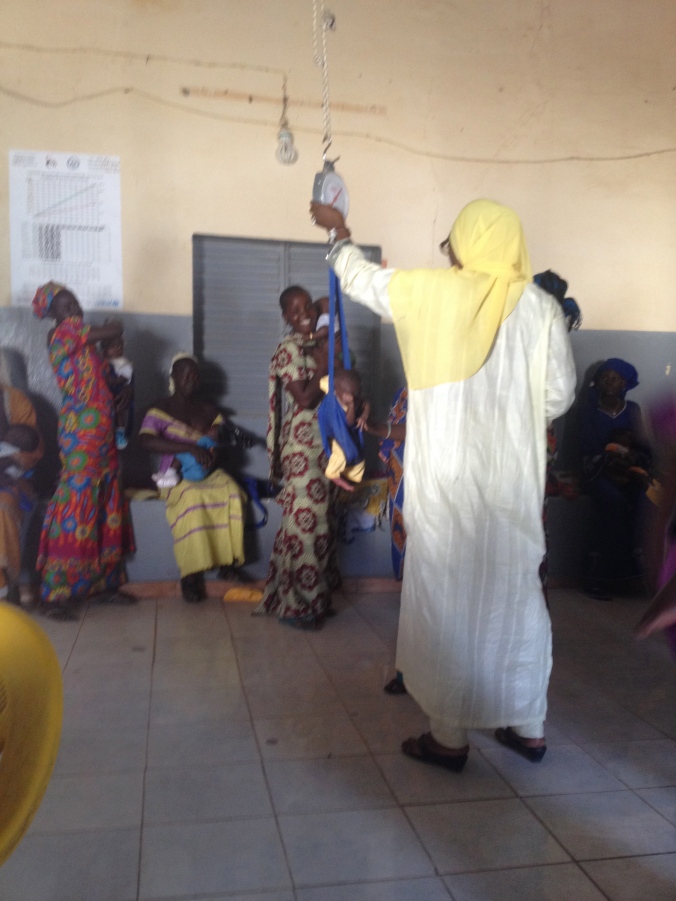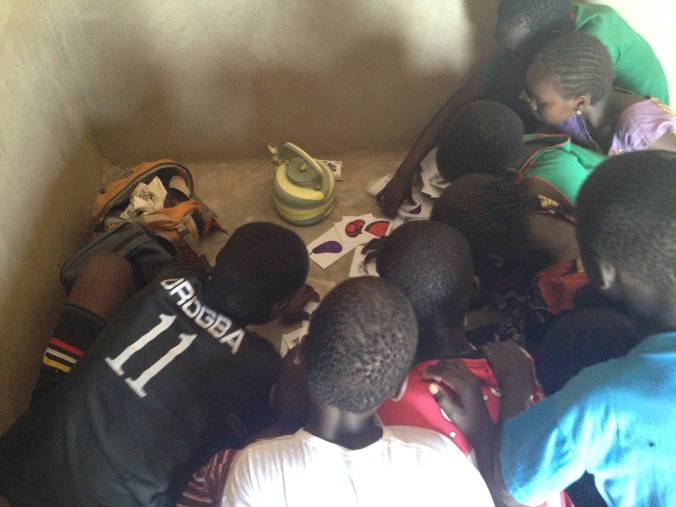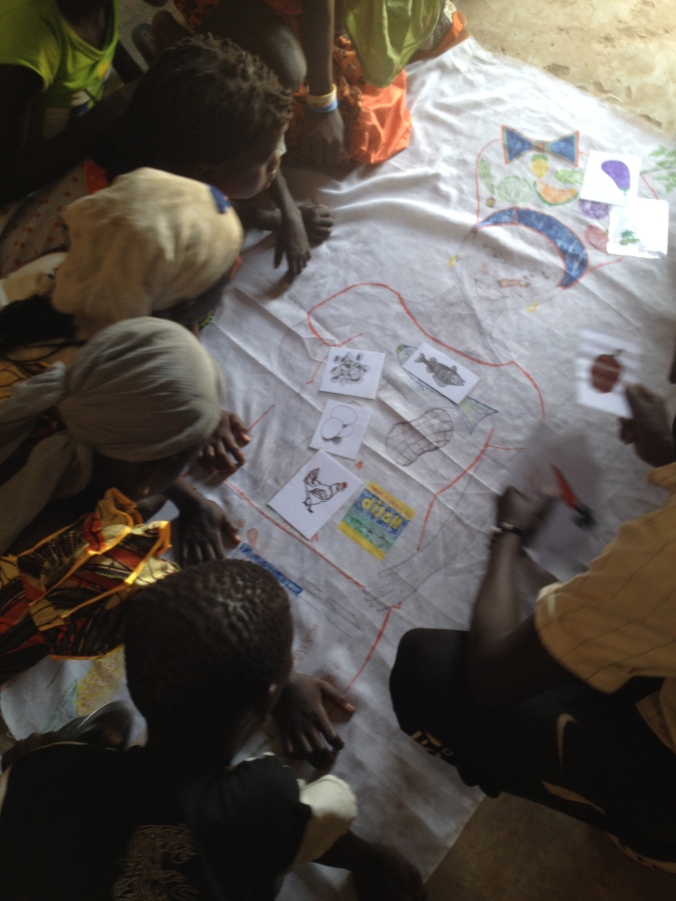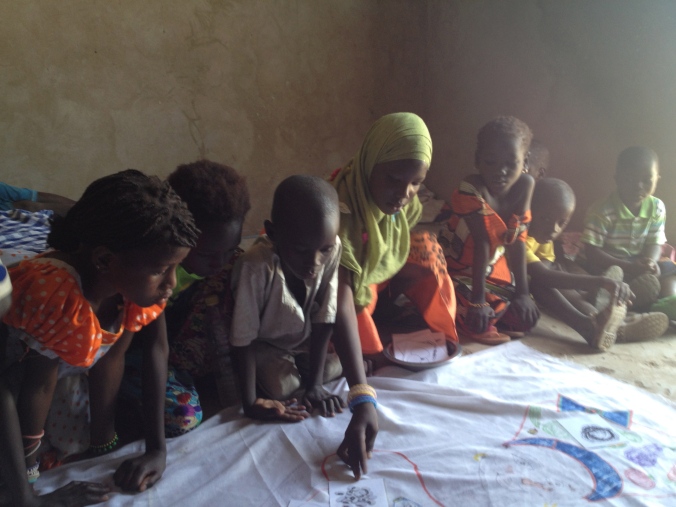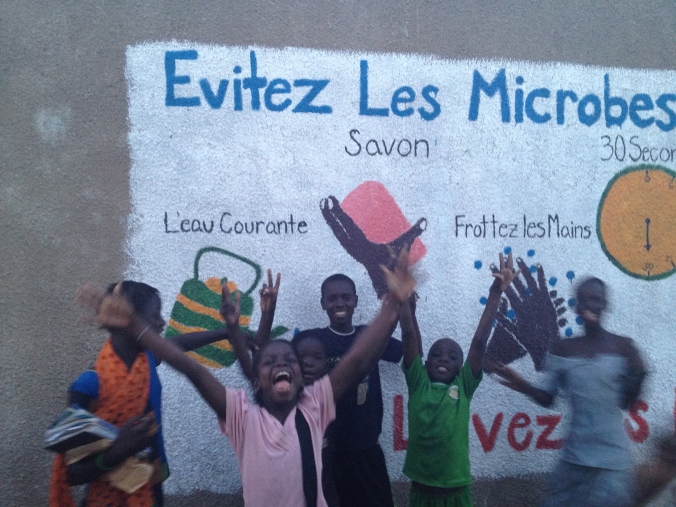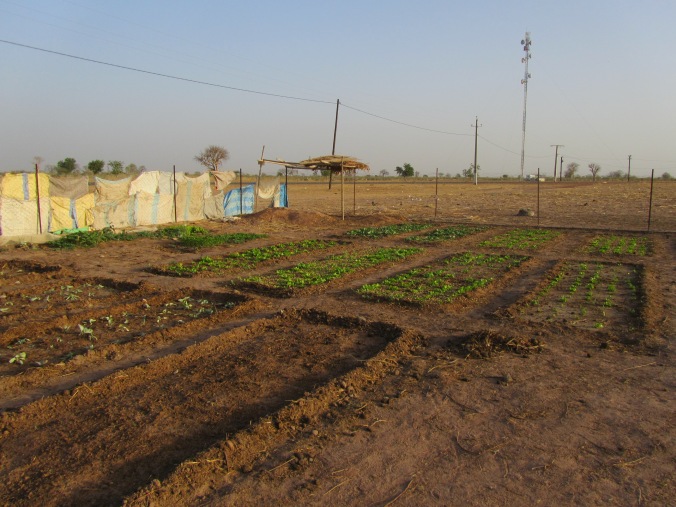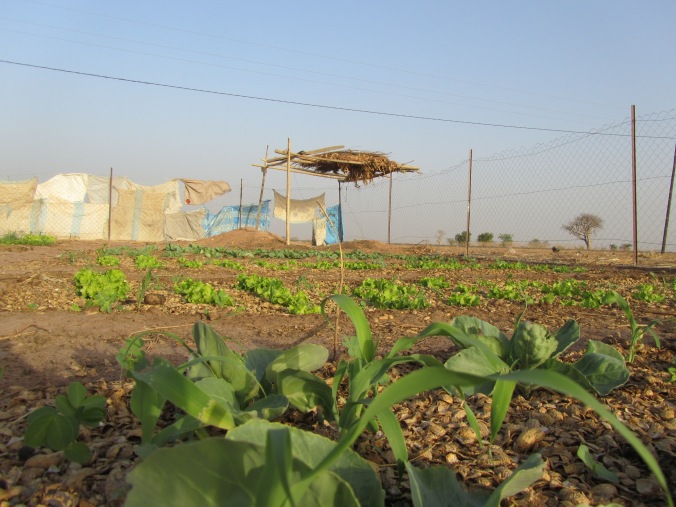
The Malem Hodar school gardening training group!
One year ago today I flew out of DC to come to Senegal! I cannot believe how quickly the last year has flown by. It has been quite a year, full of growth, mistakes, ups and downs, but I am so happy to have made it to this point and I can’t wait to see what my second year in Senegal has in store.
I realized recently that I have barely written about the work that I am doing here in Senegal. I created this blog with the intention of sharing my life in the Peace Corps with my friends and family back home, but I also wanted to share how I am putting my MPH degree to use while I am here. There were many reasons why I chose to join the Peace Corps and one of the main ones was that I wanted to get experience using the skills I learned in my public health program in a developing country. From now on I will try to keep you more updated on my projects so you can better understand what it is we do here as Peace Corps Volunteers, and what kinds of things you can do with an MPH.
A couple of posts back I introduced the school gardening project that I am working on. A lot has happened in the last couple of months and so far the project is making a lot of progress. With funding from Feed the Future and the help of many students, teachers, parents and school directors, we built two brand new school gardens and provided new tools and seeds to two other gardens that were lacking basic supplies. Chain link fencing was installed and cement basins to hold water were built. We created plant nurseries (pepinieres as they are called here) with cabbage, lettuce, eggplant, green pepper, hot pepper and bitter tomato (a weird, eggplant/tomato that is, as the name suggests, very bitter). I taught them how to make compost to improve the soil, which is incredibly dry and sandy. At first they were reluctant because it is a lot of work to make initially, but hopefully they will see the benefits after the plants grow! In the last couple of weeks we have been digging more beds for the plants and transplanting the lettuce and cabbage into their new homes. Since the beginning of this project I wanted to hold a training on improved gardening techniques with representatives from each of the schools. As a health volunteer I received very minimal gardening training, so thus far I’ve been religiously reading the gardening manual given to agriculture volunteers and (somewhat successfully, in mangled Wolof and French) attempting to explain the contents to my Senegalese counterparts.
Luckily there is a wonderful group of agriculture and agroforestry volunteers that live in my region that were willing spend a day at my site sharing their expertise at a proper training. Last Sunday, about 20 participants came to the training that I organized. The director, a teacher and/or a parent, and a student from each school came to the training. I also had an amazing counterpart named Abdoulaye Diallo help facilitate. He is a school director in a village not too far from my town who attended an agro-ecology training and is familiar with all of the techniques that Peace Corps’ agriculture volunteers learn.

While most of the participants arrived on Senegalese time (over an hour late), we got off to a great start and managed to stay on schedule. After an introduction from me and Abdoulaye about the importance of school gardening and agro-ecology, we broke out into smaller, school-based groups and had hands-on sessions in the garden. My lovely friends hosted stations on making organic pesticides, how to double-dig garden beds and mulch, and how to make tree sacks, the benefits of planting trees in the garden, and live fencing. Sadly one of my friends couldn’t make it at the last minute due to an unfortunate encounter with a ceiling fan (he is okay now!). Luckily Abdoulaye was able to step in and teach a rotation on proper plant spacing in garden beds.


Rachel teaching double-digging and mulching

Abdoulaye showing proper watering technique

Aliou spacing the lettuce

Jessie showing how to make organic pesticides

Ndiama and Tapha sifting manure and sand to stuff tree sacks
Just as the midday sun was starting to become unbearable we headed back inside, where my fellow health volunteer Jordan gave a talk about the nutritional benefits of Moringa and how to plant it. Moringa is a tree that Peace Corps promotes heavily here in Senegal, largely because of its amazing nutritional composition. When compared gram for gram, Moringa leaves contain seven times the vitamin C in oranges, four times the calcium in milk, four times the vitamin A in carrots, two times the protein in milk, and three times the potassium in bananas. They are an easy and simple way to boost nutrition and address micronutrient deficiencies, which is so important in Kaffrine where 38% of children under five are stunted (a sign of chronic malnutrition) and 71% are anemic. (Senegal DHS 2010-2011)

Jordan explaining the benefits of Moringa
To wrap up the training we had each school develop a garden action plan for the remainder of the school year. They had to brainstorm what they want to do with the vegetables they are currently growing, any new vegetables/trees they want to plant, what lessons they want to teach the students using the garden, and what they’ll do with any profits they receive from selling the vegetables. Each school presented their plan to the group. I think this exercise really helped them clarify the purpose and direction of their gardens.

Developing their action plans

School director Abdoulaye Mboup presenting his plan
At the end of the training I handed out certificates to all of the participants and we ate one of the best ceeb u jen (rice and fish) dishes that I’ve had in country so far. We all left fat, happy and hopefully with a little more knowledge and enthusiasm about gardening. Four days after the training I am definitely optimistic. At least two of the schools have adopted mulching and double-digging already, and they’ve said they want to start making the organic pesticides. Fingers crossed that this motivation will persist through the next few hot, dry months!

Ceeb!!

The lovely ladies who cooked our fabulous meal!
